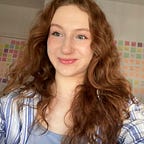The Non-Euclidean Geometry of the Backrooms
Non-Euclidean geometry through the lens of the Backrooms urban legend
--
First, let’s start with a brief introduction to non-Euclidean geometry. Euclidean geometry is the type of geometry that we learn in school, where the rules of geometry are based on the work of the ancient Greek mathematician Euclid. In Euclidean geometry, the rules are pretty straightforward: lines are straight, angles add up to 180 degrees, and parallel lines never meet.
Non-Euclidean geometry, on the other hand, breaks some of these rules. There are two main types of non-Euclidean geometry: hyperbolic and elliptic. In hyperbolic geometry, lines can curve away from each other, and angles can add up to less than 180 degrees. In elliptic geometry, lines can curve towards each other, and angles add up to more than 180 degrees.
The concept of non-Euclidean geometry is extensively used in The Backrooms. For those who may not be familiar with the urban legend, the Backrooms is a creepy pasta that describes a bizarre, endless maze of yellowish, fluorescent-lit rooms that seemingly go on forever. The legend describes the Backrooms as a place where people can accidentally enter while walking around in real life and then find themselves trapped in a seemingly endless and monotonous maze. The rooms are described as being indistinguishable from one another, and the walls, floors, and ceilings all appear to be made of the same material. The air is described as being stagnant, and the sound of buzzing fluorescent lights is ever-present.
“If you’re not careful and you noclip out of reality in the wrong areas, you’ll end up in the Backrooms, where it’s nothing but the stink of old moist carpet, the madness of mono-yellow, the endless background noise of fluorescent lights at maximum hum-buzz, and approximately six hundred million square miles of randomly segmented empty rooms to be trapped in. God save you if you hear something wandering around nearby, because it sure as hell has heard you”
First, let’s explore the concept of recursive architecture. Recursive architecture is a fundamental aspect of non-Euclidean geometry, where a space contains smaller versions of itself, creating an infinite loop or a self-referential structure. In the Backrooms, this idea is shown by the endless repetition of the yellow, fluorescent-lit rooms. Each room looks like a copy of the last one, making an endless loop that you can't get out of. This makes it hard to move forward or find your way because there aren't any distinguishing features.
The recursive nature of the Backrooms can also be seen in the various pathways and routes that connect different sections of the maze. As a person traverses the space, they may find themselves entering a room they have already been in, or they may stumble upon a new path that leads them deeper into the maze.
Next, let’s examine the concept of hyperbolic geometry. Hyperbolic geometry is a type of non-Euclidean geometry where parallel lines can curve away from each other. In the Backrooms, this can be seen in the lack of corners and edges in the space. The walls, floors, and ceilings all appear to be made of the same material, and there are no obvious corners or edges to the rooms.
This lack of corners and edges in the Backrooms creates a sense of spatial distortion. As a person navigates through the maze, they may feel like they are constantly moving in circles or that they are retracing their steps.
Finally, there’s the concept of impossible geometry. Impossible geometry refers to shapes or structures that cannot exist in the real world, such as the Penrose triangle or the Escher cube. In the Backrooms, the lack of distinguishing features and the endless repetition of the yellow rooms creates a sense of impossible geometry. The space seems to defy the laws of physics, with walls and floors that curve in impossible ways.
For example, a person may enter a room that appears to be identical to the previous room they were in, but upon closer inspection, they may realize that the room has shifted or changed in some subtle way.
The world depicted in the Backrooms videos and creepypasta has been a haunting presence in my mind for quite some time. I’ve always been fascinated by the story of the Backrooms, and so I decided to explore its unsettling mysteries from a mathematical perspective. Combining my knowledge of non-Euclidean geometry with the haunting example of the Backrooms, I’ve sought to shed light on the real-world examples of non-Euclidean geometry.
If you want to learn more about this topic…
- The Youtube channel with footage from the Backrooms:
2. An article about non-Euclidean geometry:
3. Original thread with the Backrooms:
